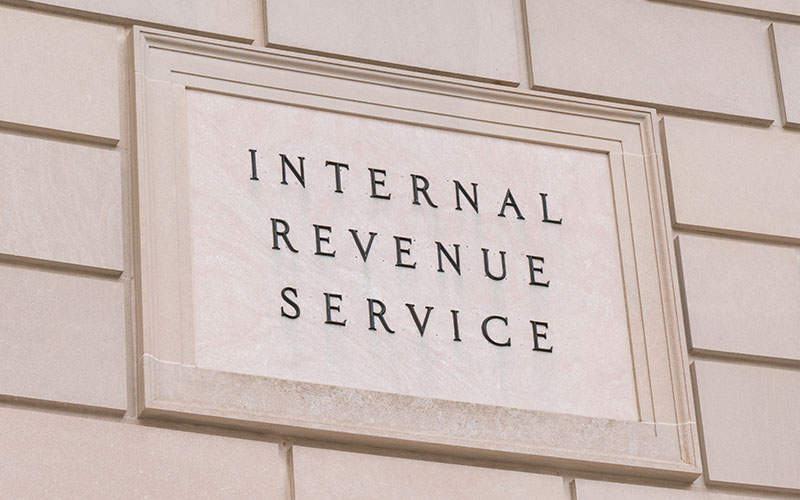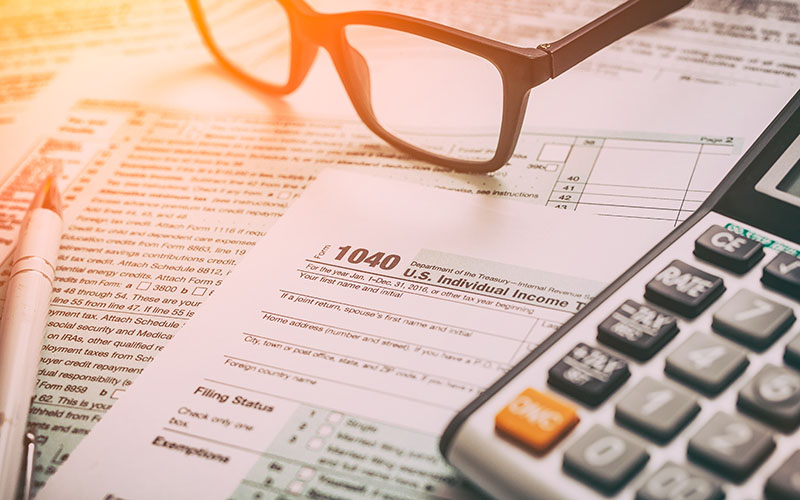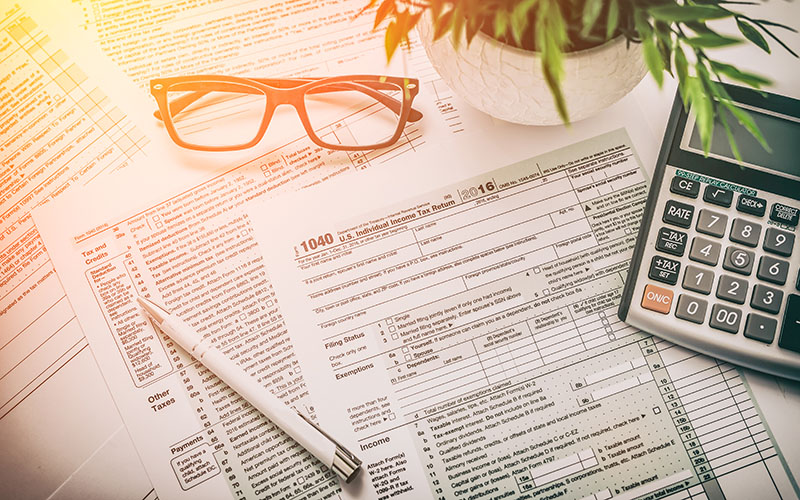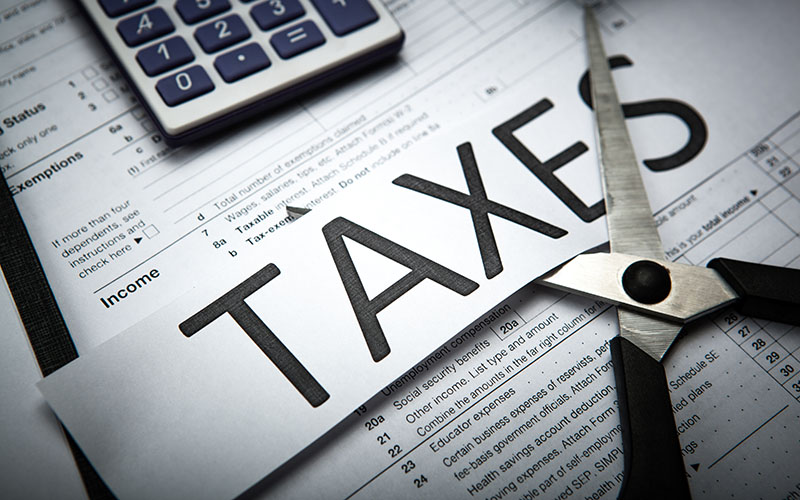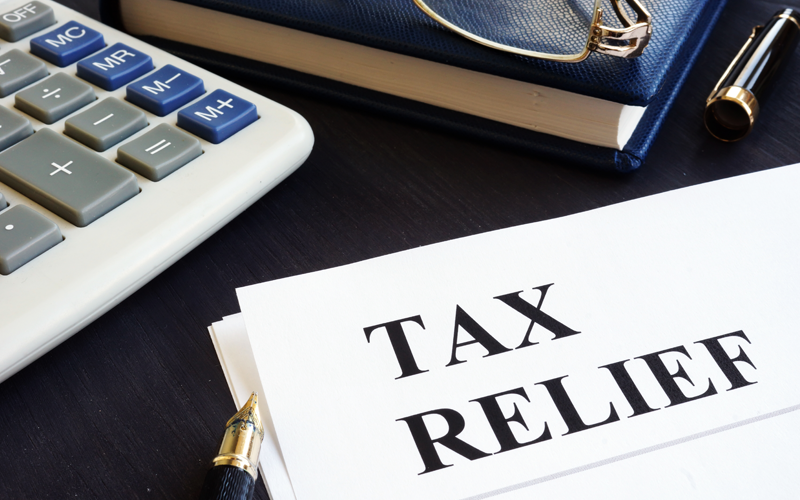What is a Non-Filer Tax Statement? The Complete Guide for Students
Key Takeaways
- A non-filer tax statement is a Verification of Nonfiling Letter from the IRS confirms that you didn’t file a tax return for a given year
- Submitting a non-filer statement is a crucial part of the financial aid Verification process for select students
- Understanding your eligibility and acting quickly can help ensure you receive the full financial aid package you're eligible for

A Guide to the Non-Filer Tax Statement – What You Need to Know
Applying for financial aid can be a long, involved process.
You have to fill out the applications, provide financial information, and then wait to find out how much you’ve received.
Sometimes, this process can be halted by a request for Verification, and you need to provide your school or the Department of Education with an IRS Verification of Nonfiling Letter to proceed.
Here’s what you need to know about providing a non-filer statement for your financial aid application:
What Is a Non-Filer Tax Statement?
An IRS Verification of Nonfiling Letter, or a “non-filer statement”, provides proof from the IRS that no tax returns were filed under your name for a given year.
This statement shows that you have not filed a 1040, 1040A, or 1040EZ form.
Receiving a non-filer statement does not mean that you weren’t required to file a tax return for that year, just that you didn’t file one.
The most common requests for non-filer tax statements from the IRS are for college students applying for financial aid. They are used to prove the income of independent students or students with dependent children.
Not all students applying for financial aid are required to submit a non-filer statement; only those selected for the Verification process need to submit a non-filer statement.
What Is Verification?
Verification is a process where a school’s financial aid office requests further information about a student’s finances and, if necessary, the finances of the student’s family. This process also can be requested by the Department of Education.
The Verification process helps to ensure the accuracy and completeness of information reported on the Free Application for Federal Student Aid (FAFSA).
You may be required to submit a variety of information as part of the Verification process, including a non-filer tax statement.
Do You Need a Non-Filer Statement for Financial Aid?
If you are selected by your college or the Department of Education for Verification, you may be required to submit a non-filer statement in order to fully qualify for financial aid.
However, not everyone selected for Verification will be required to submit a non-filer statement.
If you are asked to provide a non-filer statement, you must request one from the IRS in order to complete the financial aid process. Do not delay making this request; the longer you delay, the longer your financial aid approval will take. Taking too long could mean you miss out on qualifying for certain types of financial aid because you missed an important deadline.

Why Might I Be Required to Submit a Non-Filer Tax Statement?
Non-filer statements commonly are required by independent students or students with dependent children.
Independent Students
An independent student is not simply a student who plans to pay for college on their own. Many students financing their college educations are still required to include information on their parents’ finances with their financial aid applications.
Independent students meet one or more of the following criteria:
- You are working on a degree beyond a bachelor’s, such as a master’s or doctorate.
- You have a child or children, or other legal dependents, who receive more than half their financial support from you.
- You are married, or are separated but not divorced.
- You are at least 24 years old.
- You are a veteran of the United States Armed Forces.
- You are currently serving on active duty with the military for purposes other than training.
- You were in foster care, a ward of the court, or both your parents were deceased at any time since you were 13.
- You were legally emancipated by a court.
- You are homeless or at risk of homelessness as determined by the director of a Housing and Urban Development-approved homeless shelter, transitional program, or high school liaison.
There are some unusual circumstances that may qualify you as an independent student even if you don’t meet the above criteria, such as:
- Your last surviving parent died after you applied for financial aid.
- You and your parents have been separated and you’ve been granted refugee status by the United States government.
These circumstances must be well-documented in order for you to potentially qualify for independent student status, and you may be asked to produce information such as death certificates, immigration paperwork, and legal filings.
You may also qualify for independent student status under other circumstances but must have a compelling case for why you cannot provide complete information on your parents when filling out your FAFSA.
Some of these circumstances may include:
- Your parents live in a location where mail delivery doesn’t exist.
- Your parent is mentally handicapped.
- You suffered documented abuse from your parent(s) and contacting them would put you in danger.
- You were abandoned by your parents.
- Both your parents are incarcerated or institutionalized.
- Both your parents lack the physical or mental capacity to raise you.
- Your parents’ whereabouts are unknown or they cannot be located.
- Your parents are hospitalized for an extended period of time.
- You were determined to be living in an unsuitable situation such that you were removed from the home and placed in foster care.
- Your spouse dies or you get divorced.
In any of these situations, you will need to work closely with your school’s financial aid office to determine whether you can qualify as an independent student for the purpose of finances.
Students with Dependent Children
If you are the parent of a dependent child for whom you provide at least 50 percent of their financial needs, you may qualify as a student with dependent children for the purposes of financial aid.
Work with your college’s financial aid office to determine what you need to prove that you qualify for this status.
4 Most Common Non-Filer Scenarios
As we said earlier, not filing your taxes for a given year does not mean you weren’t required to file taxes, such as your income was too low. It only means that you didn’t file taxes for a specific tax year.
Some common situations where people do not file their taxes include:
Relative’s Death
If you are considered an heir to a deceased relative, you are still required to file tax returns for the last tax year your relative was alive.
Not filing these taxes can make you liable for any penalties and fees.
Self-Employed with Little to No Assets
Being self-employed can leave you strapped to pay taxes at the end of a year, and you may be hesitant to file them for fear of the repercussions.
Expect Refund
If you were an employee but expected a refund, you may not have filed your taxes due to lack of time or proper documentation. Knowing you don’t owe the IRS any money may have meant you didn’t really see the urgency to file.
Living Abroad
Even if you’re living in another country, you may still have to file a tax return.
For many expatriates, they don’t fully understand what’s required of them in terms of filing their taxes even when they reside outside the United States.
How to Request IRS Verification of Non-Filing Letter
There are three ways that students can request non-filer statements from the IRS: Online, by mail, and through your local taxpayer assistance center.
Online
- Visit www.irs.gov.
- Click “Get Transcript Online.” This will require you to verify your identity, and if you’re unable to do so online you will need to request your non-filer statement by mail.
- Enter your Social Security, ITIN, or EIN, as well as your email address, filing status, account numbers for loans or credit cards associated with your name, and a mobile phone number registered to you. This information is used to verify your identity with the IRS.
- Click “Continue.”
- Select “Verification of Nonfiling Letter” for the appropriate year. You will request this statement for the tax year two years prior to the school year in which you’re applying for financial aid. For example, if you’re applying for financial aid for the 2019-2020 school year, you will request the non-filing letter for the 2017 tax year.
- If you are successfully validated, you will be able to view your IRS Verification of Nonfiling Letter and print it out.
- Submit this letter to your school’s financial aid office. Some schools require you to put your student ID number on this document for easy matching to your student account, so check with your financial aid office to see if this is required.
By Mail
- Download IRS Form 4506-T from the IRS website or request one by mail from the IRS.
- Complete Lines 1-4, following the instructions on Page 2 of the form.
- Fill out Line 5a if you wish to have your verification letter mailed directly to a third party, such as your school’s financial aid office.
- On Line 7, check the box for Verification of Nonfiling.
- On Line 9, enter the last day of the year for the tax year you’re requesting. For example, if you’re applying for financial aid in the 2019-2020 academic year, you need a letter for the 2017 tax year, so enter “12/31/2017.”
- Check the signatory authority box above the signature line.
- Sign and date the form, and enter your telephone number.
- Mail or fax the completed form to the address or fax number listed on Page 2 of the form.
- Within 5 to 10 days, you can expect to receive your printed non-filer statement from the IRS. If you’re having the statement sent directly to your financial aid office, they should receive it in the same amount of time.
- Submit your non-filer statement to your financial aid office. Some schools require that your student ID number be on the letter, so check with your financial aid office for directions.
How to Complete a Parent Non-Filer Tax Statement
If you are a dependent student and your parents didn’t or don’t plan to file taxes for a given year, you may be required to submit a non-filer statement for them.
In these cases, they should request non-filer statements using their own identifying information, not yours, and you should send the completed form to your school’s financial aid office.
Your parent can fill out the request on the IRS website, request and fill out a Form 4506-T and send it to the IRS, or visit their local taxpayer assistance center.

Find Your Student Loan Refinancing Match
Refinancing your student loans - or paying off any other debt - can be stressful. You want to find a company that will advocate for your best interests while being aggressive in helping you pay down your debt.
At the Credit Review, we collect all the best financial services companies so you can compare them so you can find your best match. Search for yours today!
What Is a “Non-Filer”?
A non-filer is any person or business who, for whatever reason, didn’t file a tax return in a given year.
What Year Do I Need a Non-Filer Statement for?
You’ll need a non-filer statement for the tax year two years prior to the school year you’re applying for financial aid for.
So, if you’re applying for financial aid for the 2019-2020 academic year, you will request a non-filer statement for the 2017 tax year.
How Long Does It Take to Get a Non-Filer Tax Statement?
If you apply for your non-filer statement online, you can view and print your statement immediately after the IRS verifies your identity.
When applying for the statement by mail, expect to receive the statement within 5 to 10 days.
Do I Need a Non-Filer Statement if I Am a Dependent Student?
If you are a dependent student, you should not be asked to provide a non-filer statement for yourself.
However, if one or both of your parents do not file tax returns, you may be asked to submit their non-filer tax statements to your school’s financial aid office.
Where Does My Non-Filer Statement Go?
You will send your non-filer statement to your school’s financial aid office. Your individual institution may require that you include your student ID or some other piece of identifying information when sending this statement, so check with the office for more instructions.
You also can choose to have your non-filer statement sent by mail directly to your school’s financial aid office. If you want to choose this option, be sure to fill out Line 5a on Form 4506-T before submitting it.
Edited by:
Bryan Huynh
•
Product Tester & Writer

